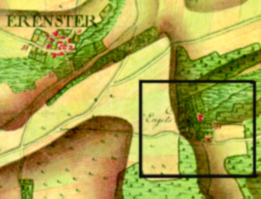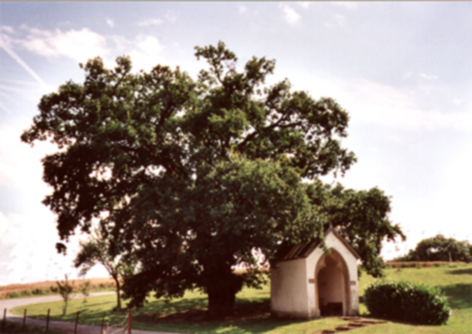The « Engelshaff » farm has an old historical background and is represented for the first time on the famous Ferraris Map, dated 1777.
 The only name “Engelshaff” however can already be found on an old document dated 1526, where its surroundings had been described. It was said that a village had been on that same place and that all the inhabitants probably died from wars and Black Death epidemic. In another document dated 1403, a village named “Engerspach” is mentioned and probably it was the same “Engelshaff” from which only one farm house survived. Nowadays only the old chapel and its oak tree reminds of these old times.
The only name “Engelshaff” however can already be found on an old document dated 1526, where its surroundings had been described. It was said that a village had been on that same place and that all the inhabitants probably died from wars and Black Death epidemic. In another document dated 1403, a village named “Engerspach” is mentioned and probably it was the same “Engelshaff” from which only one farm house survived. Nowadays only the old chapel and its oak tree reminds of these old times.
The origin of the name “Engelshaff”
The derivation of the site names like “Angel” or “Engel” is not easy to elucidate, as several interpretations are possible.
- It could be the name of an old religion linked word (“Engel” means angel).
- The denomination can also source from a person’s name.
- It could have been the name of an inn (at the angel’s).
- The word “angulus” meaning angle or corner could also be the origin.
- The old German word “anger” means grassland or pasture and stands nowadays for the wet grassland.
It is supposed that the name “Engelshaff” indeed comes from the wet grassland situated the at the edge of the forest.

The old oak tree It is one of the 303 most famous classified trees in Luxembourg. With its circumference of 4.60 m (measured at 1.30m height), this oak is also classified 26th of the biggest trees in Luxembourg.
